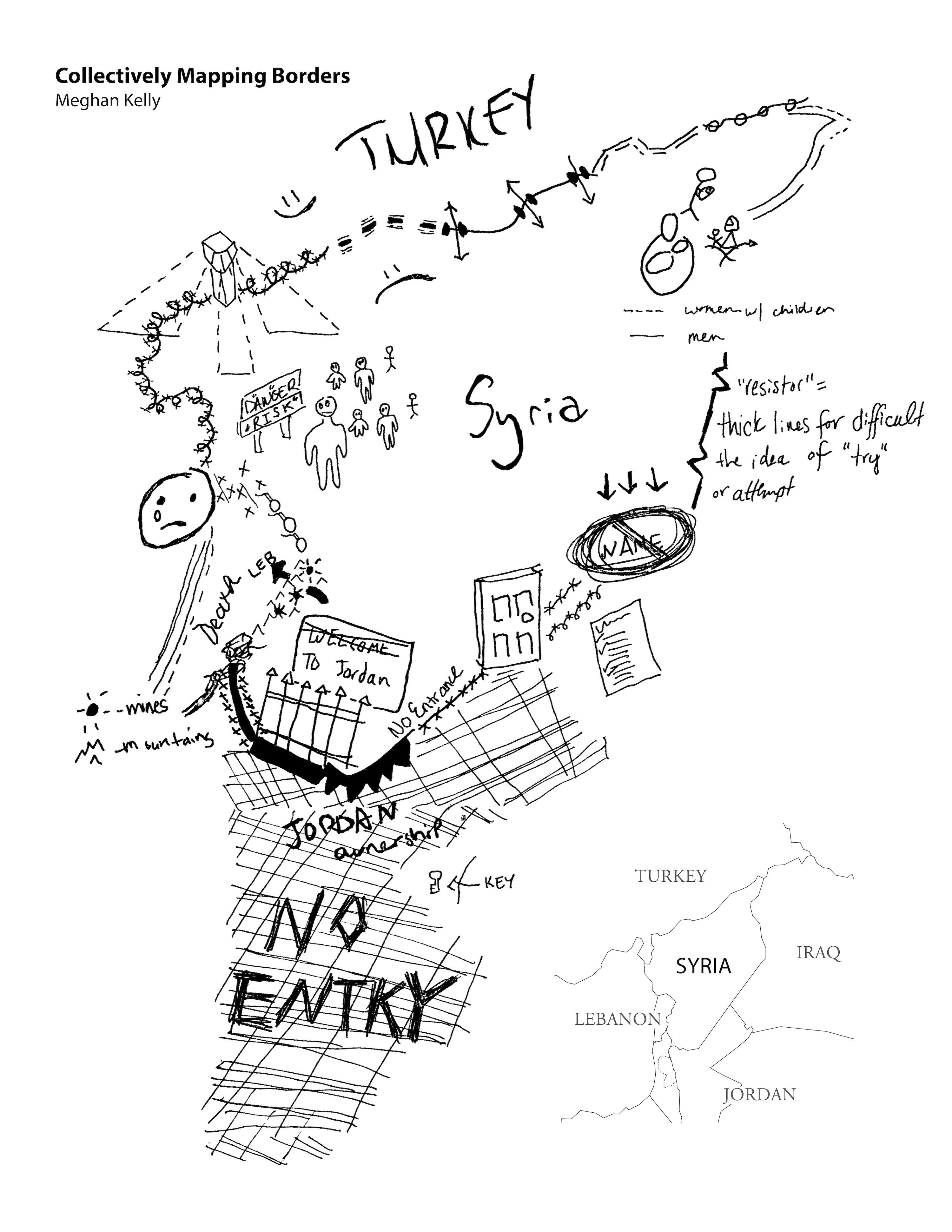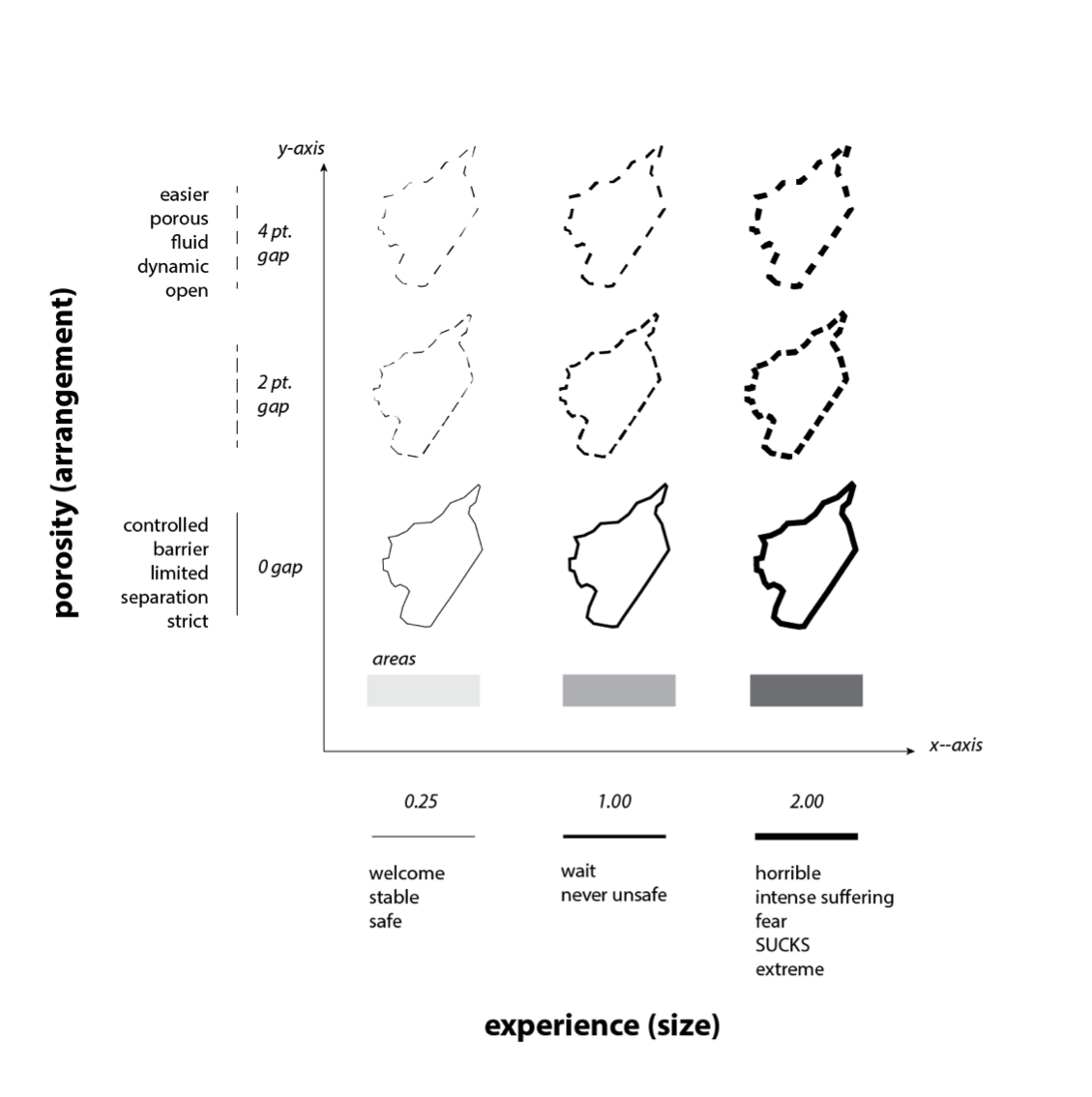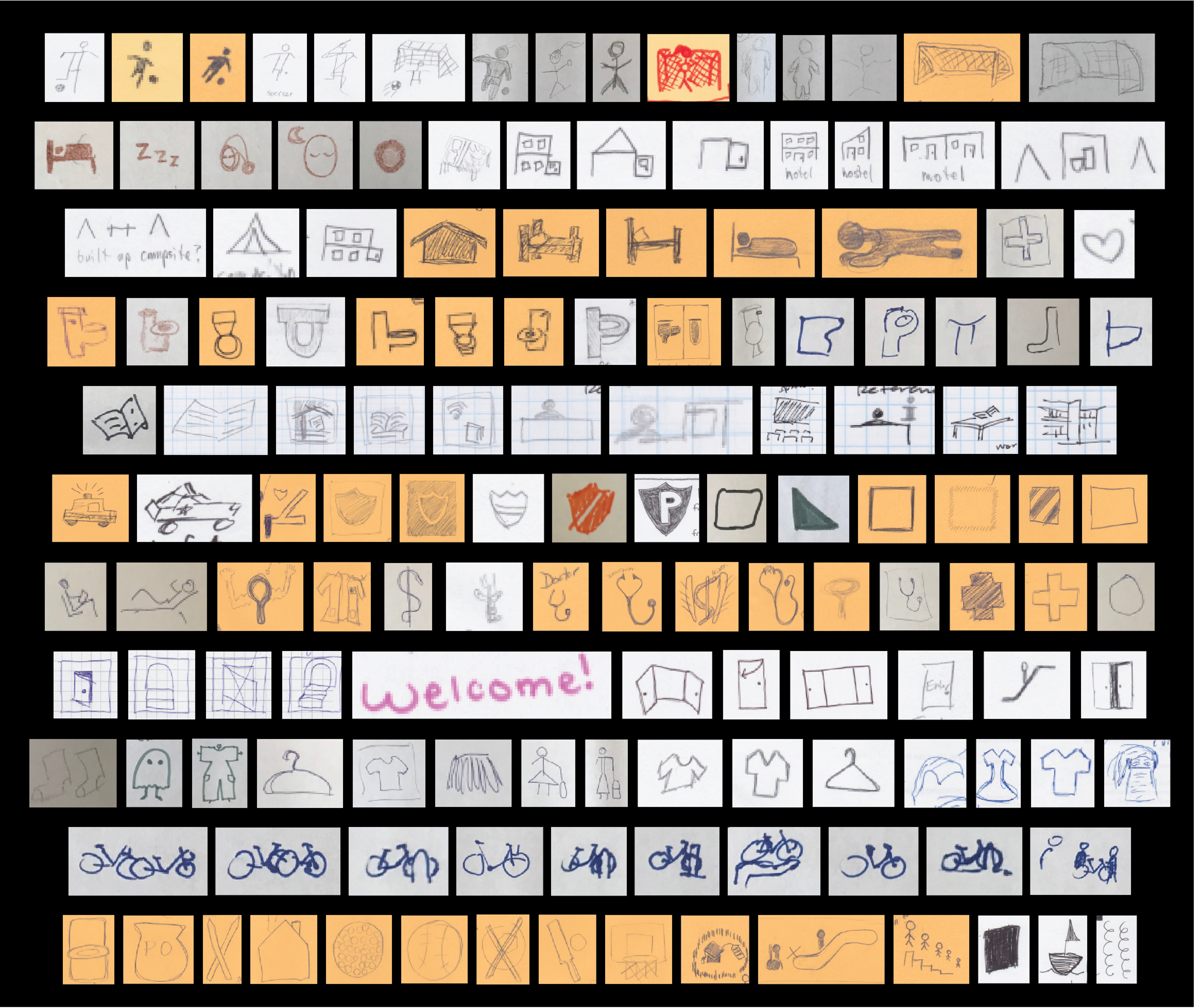In June 2025, Meghan Kelly will join the Leventhal Center as this year’s Designer-in-Residence. Meghan is a cartographer and an assistant professor in the Geography and the Environment Department at Syracuse University. Her work draws on feminist practice and challenges our conventional understandings of space and place using new forms of visualization.
We sat down with Meghan to learn more about how she became a geographer, how she thinks about critical cartography, and her upcoming residency at the Center.
How did you first start getting interested in maps and geography? Are there any particular maps you saw early on in your life which inspired you?
I began college as a history major with a minor in political science and switched to physical therapy and the sciences before being undeclared for an extended period of time. I was “okay” at a variety of things and didn’t have a stand out field but I enjoyed writing and class discussions as well as applied, hands-on activities. I went to chat with a geography professor who was leading a study abroad program to Turkey and while I waited in the hallway, I noticed a National Geographic map of the Middle East that brought together the cultural and political geographies with the physical geography and environmental and social history of the region. I remember thinking that the map brought together everything that I had been studying from a variety of different fields. I was drawn to the map (and subsequently geography) because of the seemingly disparate connections and relationships that it wove together. I left that meeting a geography major (without ever have taken a course) and I had a flight to Turkey shortly afterwards.

Meghan Kelly, Collectively Mapping Borders
You describe your work as advancing a feminist approach to cartography. Can you say more about what this means and how we see it playing out in some of the maps you have created?
For me, feminist mapping involves thinking, mapping, and engaging differently. As we see in many other areas of life right now, the status quo in mapping, data visualization, and spatial data science (too often) reinforce social and environmental injustices. Feminist mapping challenges the status quo to help create a more just world through maps and spatial data. To do this, feminist mapping recognizes that maps are not neutral. They are political and reflect the worldviews (i.e., the perspectives and bias) of their makers. As such, feminist mapping centers those most impacted by social and environmental injustice and challenge the very power structures (i.e., racism, ableism, sexism, etc.) that create the status quo and injustice. Feminist mapping offers alternative and news ways of thinking and visualizing the future.

Meghan Kelly, excerpt from Borders: An Atlas of Syrian Border Crossings
In my own work, I draw inspiration from feminist theory (among other pools of thought) to think about maps differently or through alternative perspectives. In my work mapping Syrian refugee border stories, for example, I expanded my definition of “borders” from simply geopolitical boundaries drawn as solid black lines on the world map to include informal borders that we cross everyday (e.g., borders of the home or neighborhoods), and more personal borders like the body or relationships. In some of my other work, I prioritize partnerships with community groups and collaborative mapping workshops allowing us to brainstorm and map differently together. For example, I worked with folks in Milwaukee, Wisconsin to create alternative maps of the city that challenge conventional portrayals of race and policing (past and present) by mapping youth stories. Feminist mapping also influences how I engage in the classroom as I aim to create a space the supports students with varying backgrounds and experiences as well as creative mapping practice. In my classes, we spend time developing community guidelines for how we want to engage and work with one another and focus on iteration, experimentation, and the messy mapping process instead of the map output.
In your residency at the Leventhal Center, you’ll be working on new ways of thinking about icons on maps. Tell us more about how you’ve already begun to rethink icons and iconographic visual language.

Examples of icon sketches from one of Meghan Kelly's icon-drawing workshops
Map icons are typically the tiniest symbols included on maps, especially the maps we use on our phones everyday (e.g., Google or Apple Maps). While small and compact, they carry significant meanings locating people, places, activities, and stories. Mapmakers use map icon libraries that are preloaded into our mapping tools. These icon libraries are consistently designed to convey a cohesive map style and are often applied universally in maps. In other words, mapmakers are often “locked” into specific set of map icons that may or may not be suitable for a specific map. Map icons, however, are not “one-size-fits-all” and we need map icons that are context specific. During my residency, I aim to collectively develop an icon set for Boston that reflects community experiences and perspectives and will be publicly available for the community to use. I will also create a map of Boston that incorporates these icons.
If you could imagine a dream collaboration with an individual—or a group—which are outside the traditional professions of cartography and geographical research, what might that look like?
This residency at the Leventhal Center is a dream collaboration for me! The last few years have been a bit tumultuous and I’m grateful for this opportunity providing me with time, space, and resources to map. I’m really excited to work, brainstorm, and/or create with the mappy-minded staff at the Leventhal Center and Boston Public Library and develop a mapping project that engages with and learns from the local community in a meaningful way.
In terms of other dream collaborations, I’m slowly getting to know my new home base in Syracuse, New York and important community-based organizations in the city. I’d love to learn from and map with local artists and activists that are actively shaping more just futures in the city. Right now, my goal is to be present within the community offering my skill set and support where needed.
I always like to ask geographers about how they think about spending time in a place which is new to them. You’ve only spent a little bit of time in Boston before; how are you pre-orienting yourself to the city and what will be some of the first things you do when you arrive?
I love getting to know everyday places in new cities, especially if I’m spending more than a few days in a new place. Where can I get groceries and toiletries and where can I do laundry? Where is the nearest library, public space, hardware store, and coffee shop? Are there neighborhood events nearby or maybe a farmer’s market? Where can I find live music and where can I sit on a patio for hours? To do this, I like asking for recommendations and simply going for walks in the neighborhood where I’m staying. Once my essentials are covered, I turn to the internet and friends for recommendations balancing local spots with the necessary tourist destinations. During my time in Boston, I set a goal for myself to try a new coffee shop and restaurant every week in differing neighborhoods. I also plan to do two new activities every week and one has to be free to the public. I organize all of these places in a map-based app called Wanderlog.
If you had one day to spend working on something creative outside of your main project, what would you do?
Sewing! My mom is an incredible seamstress making everything from Barbie clothes and Halloween costumes to my childhood wardrobe and now quilts. I grew up dabbling with embroidery, cross stitch, and quilting (nothing too serious or complex). We fixed her sewing machine from high school when I moved to Syracuse in 2023 and I started a quilt of my own. In an effort to both procrastinate and limit screen time, I have been recently obsessed with deconstructing and remaking everything from kitchen curtains, couch pillows, zippered pouches, and shorts. I would spend a day finishing the initial quilt that got me back into sewing. I then have plans for a mappy quilt. Stay tuned!
Meghan Kelly will be in residency at the Leventhal Center in June 2025. Subscribe to our mailing list or follow our events calendar to learn more about programs during her residency. For more about Meghan and to see more examples of her work, visit her personal website.
Our articles are always free
You’ll never hit a paywall or be asked to subscribe to read our free articles. No matter who you are, our articles are free to read—in class, at home, on the train, or wherever you like. In fact, you can even reuse them under a Creative Commons CC BY-ND 2.0 license.